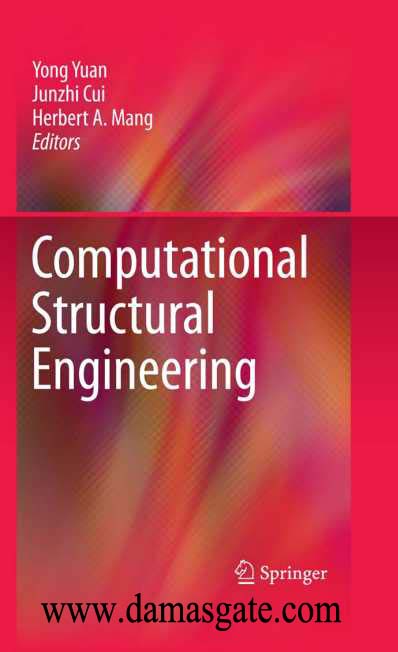Computational Structural Engineering

Preface
Following the great progress made in computing technology, both in computer and programming technology, computation has become one of the most powerful tools for researchers and practicing engineers. It has led to tremendous achievements in computer-based structural engineering and there is evidence that current developments
will even accelerate in the near future. To acknowledge this trend, Tongji University, Vienna University of Technology, and
Chinese Academy of Engineering, co-organized the International Symposium on Computational Structural Engineering 2009
in Shanghai(CSE’09). CSE’09 aimed at providing a forum for presentation and discussion of stateof-the-art
development in scientific computing applied to engineering sciences.
Emphasis was given to basic methodologies, scientific
development and engineering applications. Therefore, it became a central academic
activity of the International Association for Computational Mechanics (IACM),
the European Community on Computational Methods in Applied Sciences (ECCOMAS), The Chinese
Society of Theoretical and Applied Mechanic, the China Civil Engineering Society,
and the Architectural Society of China. A total of 10 invited papers, and around 140 contributed papers were pre-
sented in the proceedings of the symposium. Contributors of papers came from 20 countries around the world and covered a wide spectrum related to the computational
structural engineering.
As Chair of the Organizing Committee of CSE’09, I would like to thank all the participants and the authors for their contributions. We would also like to gratefully acknowledge the guidance and cooperation provided by the International
Advisory Committee and the Scientific Committee as well as the support
provided by the members of the Local Organizing Committee. In particular, we
appreciate the financial support provided by the National Natural Science Foundation of
China, the Eurasia-Pacific Uninet, and the Ministry of Science and Technology of
the People’s Republic of China.
Zuyan Shen
Academician of Chinese Academy of Engineering Professor of Tongji University
Shanghai, China
Download
http://s18.alxa.net/s18/srvs2/01/Com...ngineering.rar

Preface
Following the great progress made in computing technology, both in computer and programming technology, computation has become one of the most powerful tools for researchers and practicing engineers. It has led to tremendous achievements in computer-based structural engineering and there is evidence that current developments
will even accelerate in the near future. To acknowledge this trend, Tongji University, Vienna University of Technology, and
Chinese Academy of Engineering, co-organized the International Symposium on Computational Structural Engineering 2009
in Shanghai(CSE’09). CSE’09 aimed at providing a forum for presentation and discussion of stateof-the-art
development in scientific computing applied to engineering sciences.
Emphasis was given to basic methodologies, scientific
development and engineering applications. Therefore, it became a central academic
activity of the International Association for Computational Mechanics (IACM),
the European Community on Computational Methods in Applied Sciences (ECCOMAS), The Chinese
Society of Theoretical and Applied Mechanic, the China Civil Engineering Society,
and the Architectural Society of China. A total of 10 invited papers, and around 140 contributed papers were pre-
sented in the proceedings of the symposium. Contributors of papers came from 20 countries around the world and covered a wide spectrum related to the computational
structural engineering.
As Chair of the Organizing Committee of CSE’09, I would like to thank all the participants and the authors for their contributions. We would also like to gratefully acknowledge the guidance and cooperation provided by the International
Advisory Committee and the Scientific Committee as well as the support
provided by the members of the Local Organizing Committee. In particular, we
appreciate the financial support provided by the National Natural Science Foundation of
China, the Eurasia-Pacific Uninet, and the Ministry of Science and Technology of
the People’s Republic of China.
Zuyan Shen
Academician of Chinese Academy of Engineering Professor of Tongji University
Shanghai, China
Download
http://s18.alxa.net/s18/srvs2/01/Com...ngineering.rar